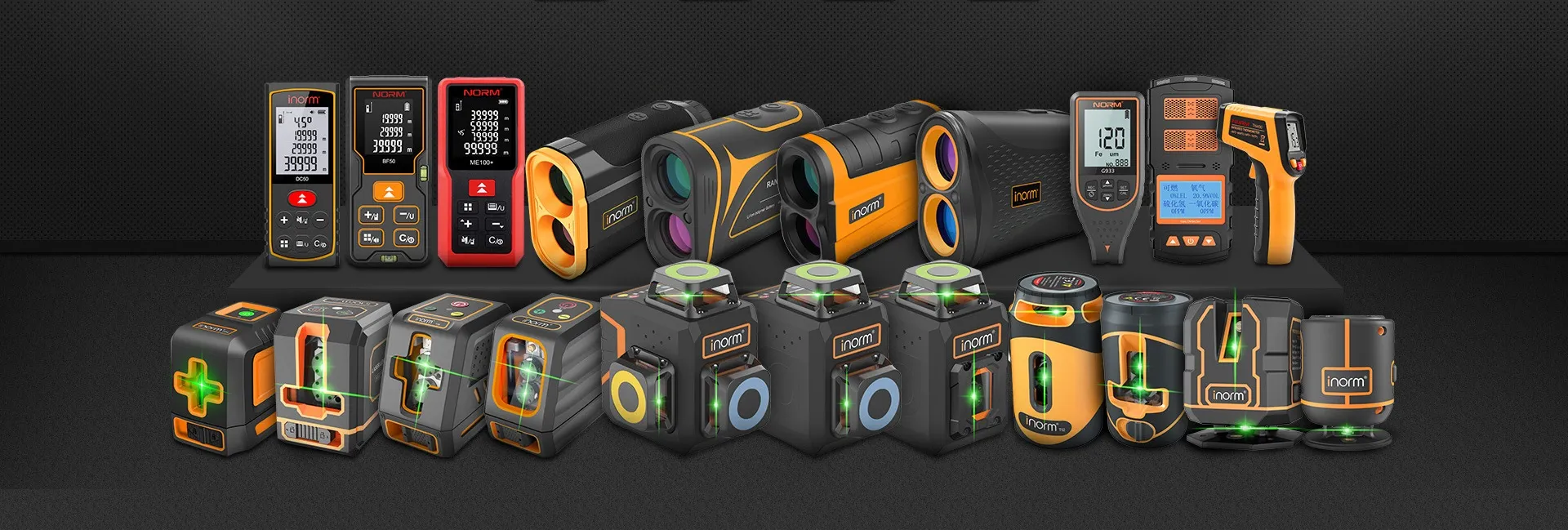How to Choose a Good Laser Distance Meter: 7 Key Factors to Consider
Laser distance meters (LDMs) have revolutionized measuring tasks in construction, interior design, real estate, and DIY projects. But with so many options on the market, selecting the right tool can be overwhelming. In this guide, we’ll break down the 7 critical factors to help you choose the best laser distance meter for your needs.
1. Measurement Range
The first thing to consider is how far you need to measure. Laser distance meters typically range from 50 meters (164 feet) for basic home use to 250 meters (820 feet) for large-scale construction.
- Short Range (50–100m): Ideal for indoor projects like room dimensions, furniture layouts, or renovations.
- Long Range (100–250m): Perfect for outdoor tasks like land surveys, roofing, or commercial construction.
Pro Tip: Always choose a meter with a range slightly longer than your maximum requirement to ensure accuracy.
2. Accuracy
Precision is non-negotiable. Look for models with **±1.5mm to ±2mm accuracy** for professional-grade results. For example:
- **±1.5mm**: Best for engineering, high-end construction, or detailed interior design.
- **±2mm**: Suitable for most DIY tasks and general contracting.
3. Durability & Build Quality
A good LDM should withstand harsh environments. Prioritize:
- IP54 or IP65 Rating: Dust/water resistance for outdoor use.
- Shockproof Housing: Protects against drops (e.g., rubberized edges).
- Operating Temperature Range: Ensure it works in your climate (e.g., -10°C to +50°C).
4. Functionality & Features
Match features to your workflow:
- Basic Functions: Distance, area, volume calculations.
- Advanced Tools: Bluetooth connectivity (e.g., syncing data to smartphones), Pythagorean mode for indirect measurements, or memory storage.
- User-Friendly Interface: Backlit displays, intuitive buttons, and multilingual support.
5. Battery Life
Avoid constant recharging with models using AAA batteries (5,000+ measurements) or rechargeable lithium-ion packs. Look for auto-shutoff and low-battery indicators to save power.
6. Laser Class & Safety
Most LDMs use Class II lasers (safe for eyes), but confirm compliance with FDA/CE/RoHS certifications. A laser pointer or red/green beam improves visibility in bright conditions.
7. Budget & Brand Reputation
- Entry-Level (150): Suitable for homeowners (e.g., MD50).
- Mid-Range (300): Balances features and affordability (e.g., MD100 with Bluetooth).
- Professional-Grade ($300+): For industrial use with advanced specs (e.g., Leica or Bosch models).
Stick to trusted brands like MD Series, Leica, Bosch, or DEWALT for reliability and warranty support.
Bonus: Top 3 Laser Distance Meters in 2025
NORM MD100
- Range: 100m | Accuracy: ±2mm
- Features: mute function, area/volume modes.
- Best For: Contractors and architects.
Bosch GLM400C
- Range: 120m | Accuracy: ±2mm
- Features: Color display, camera integration.
DEWALT DW03050
- Range: 50m | Accuracy: ±2mm
- Features: Compact design, budget-friendly.
FAQs: Choosing a Laser Distance Meter
Q: Can laser distance meters work outdoors?
A: Usually not, but if it's with a camera, yes.
Q: How do I maintain my LDM?
A: Store in a dry case, replace batteries promptly, and avoid pointing the laser at reflective surfaces.
Q: Are cheaper models reliable?
A: For occasional use, yes. For daily professional tasks, invest in mid-range or premium tools.
Final Thoughts
Choosing the right laser distance meter boils down to your measuring needs, budget, and work environment. Prioritize accuracy, durability, and essential features like Bluetooth or waterproofing to maximize efficiency.
Whether you’re measuring a backyard for landscaping or calculating square footage for a client, the right LDM saves time, reduces errors, and elevates your work quality. Ready to upgrade? Explore the MD Series Laser Distance Meters for tools trusted by professionals worldwide.


